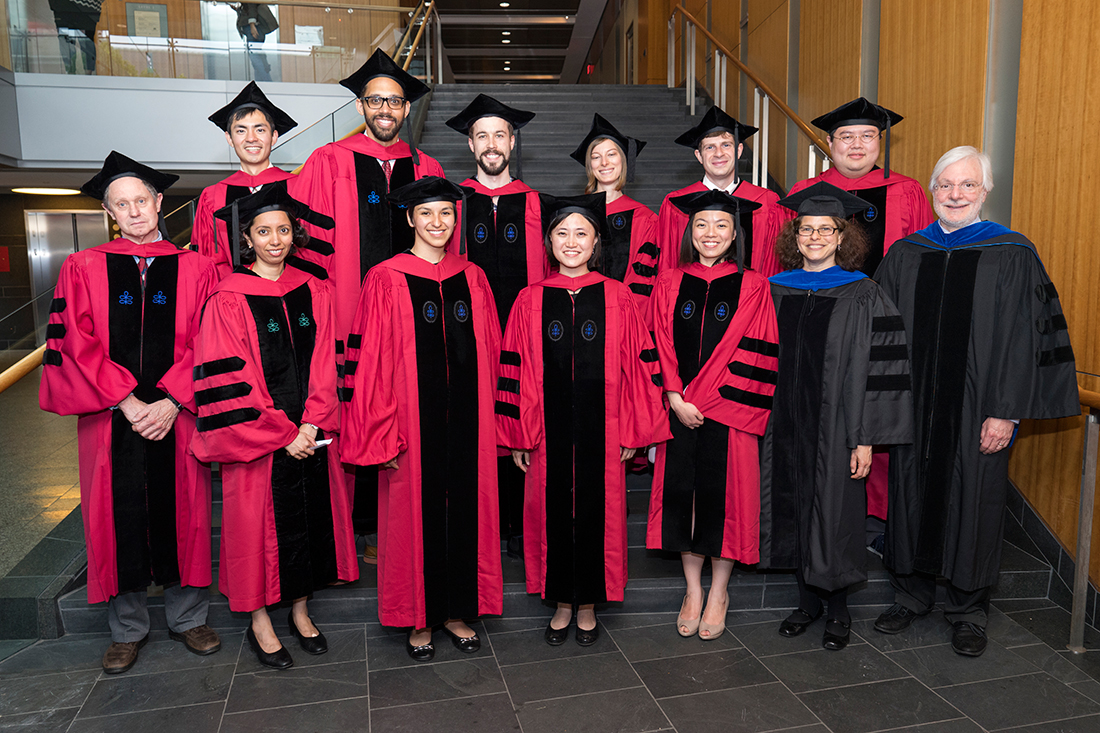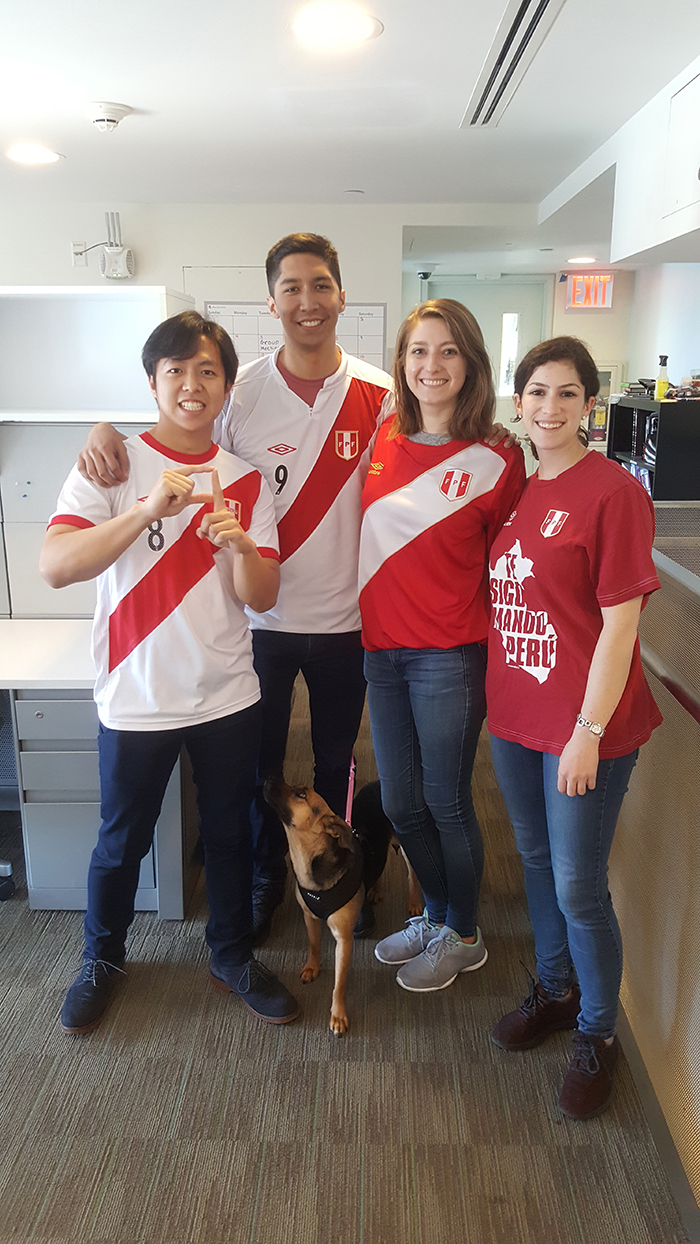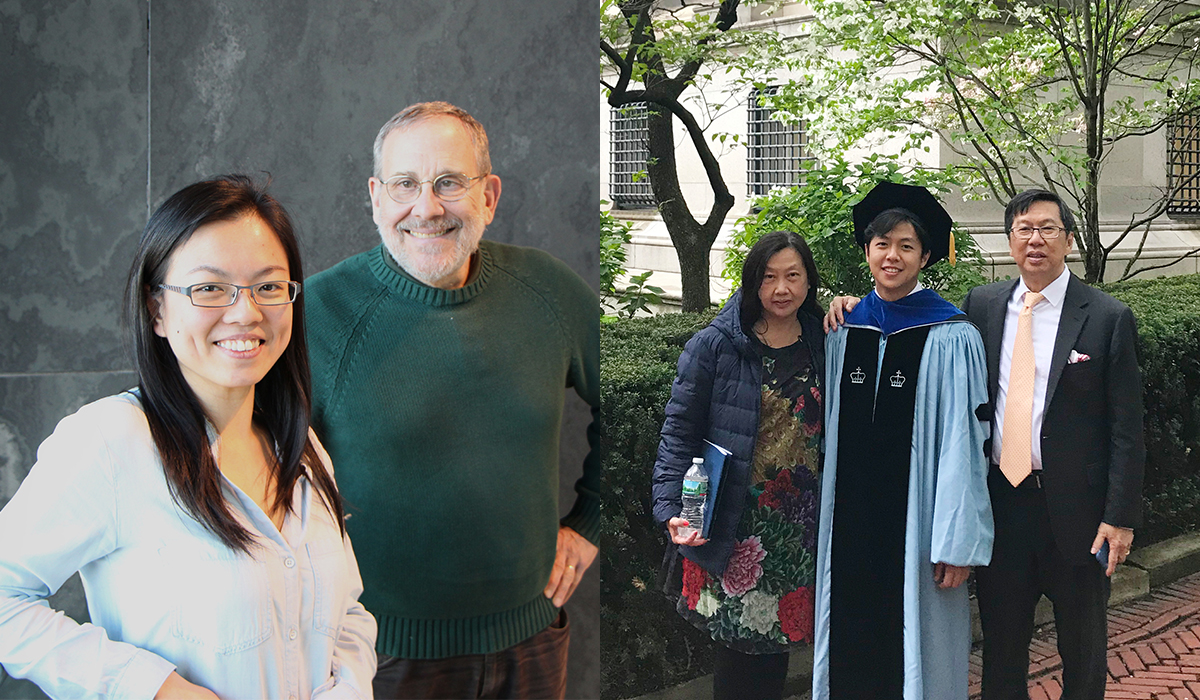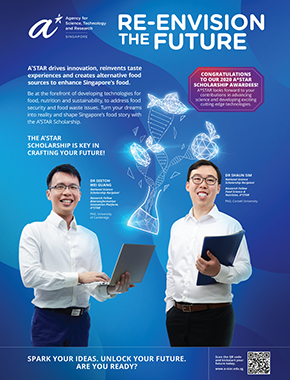Left: National Science Scholarship (BS-PhD) recipient Dr Liu Jinyue heads the Laboratory of Single-Cell Spatial Neuromics at A*STAR’s Genome Institute of Singapore, developing and applying nucleic acid-based technologies to investigate the human brain and improve mental health. She has a Ph.D. in Neurobiology from Harvard University. She is pictured with her Ph.D. advisor, Professor Joshua Sanes.
Right: Dr Jonathan Low, with his proud parents at his graduation ceremony, is a Development Scientist with the Advanced Remanufacturing and Technology Centre (ARTC), identifying and developing processes that make manufacturing more efficient for various industry partners. He is a National Science Scholar (BS-PhD) and has a Ph.D. in Materials Chemistry from Columbia University.
Any graduate looking for a research-oriented pathway should prioritise the Agency for Science, Technology and Research (A*STAR) as a sponsoring organisation. The agency lends its support to one of the few research-oriented scholarships in Singapore, nurturing talented candidates to advance scientific discovery and technological innovation in mission-oriented research.
To get an idea of what a research-oriented scholarship really means for both scholar and organisation, BrightSparks spoke to two National Science Scholarship (BS-PhD) recipients.
Dr Liu Jinyue heads the Laboratory of Single-Cell Spatial Neuromics at A*STAR’s Genome Institute of Singapore (GIS), developing and applying nucleic acid-based technologies to investigate the human brain and improve mental health.
Under the same scholarship but with a wholly different portfolio, Dr Jonathan Low is a Development Scientist with the Advanced Remanufacturing and Technology Centre (ARTC) led by A*STAR, identifying and developing processes that make manufacturing more efficient for various industry partners.
The two scholars made some time in their busy schedules to elaborate on what the scholarship and A*STAR mean to them as scientists and as students.
Hitting the Mark
Dr Liu Jinyue’s dedication to accuracy expresses itself in more than her research. At school, she enjoyed precision sports and was a marksman.
Dr Liu, you have a PhD in Neurobiology, and Dr Low, a PhD in Materials Chemistry. Both of these fields could be considered rather esoteric – how and why did you each become interested in them?
Dr Liu: I have always been curious about the brain because it directs all our thoughts, emotions and behaviour – the essence of who we are. However, I was rather clueless about how to interrogate the brain until I took a neuroscience course during my undergraduate studies at Cambridge. There, I learnt the scientific methods for exploring this complex organ, and how neurological changes are linked to biological processes in the brain. I was inspired to undertake a personal journey in neurobiology with the hope of translating a deep understanding of the brain into new prospects for personalised psychiatry and mental well-being.
Dr Low: In the year I was applying to universities, National Geographic Magazine did a feature on nanotechnology and it gave me that push to apply for a science course. I gravitated toward chemistry because it is such a such an expansive field that covers many sustainable technologies. Research topics such as solar energy generation, sustainable materials and 3D printing all contain elements of chemistry.

Dr Liu (front row, third from right), with her fellow Ph.D. graduates from Harvard University.
What possibilities are there for those who wish to join A*STAR?
Dr Liu: Research fellowships are available for scholars who are keen to continue research. There are also opportunities to participate in research management, spin-off companies, academia or even policy-making. These are all areas where in-depth training in the sciences is particularly relevant.
Dr Low: You get to work closely with industry, and actually see the fruits of your labour making a direct impact in a company! There are also opportunities for industrial attachments, where you get an even closer look at how technology is developed and applied.
On the topic of research, both of you pursued a PhD in your respective fields. What was your biggest takeaway during your university days, and how do you apply it to your current work?
Dr Liu: Perseverance and creative problem-solving go a long way in research. Science moves very fast and technologies improve all the time, so we have to stay flexible. While training in neuroscience, I picked up bioinformatics skills to keep up with the scientific revolution in gene expression profiling. I further honed these skills at GIS upon my return home. Now, they are a staple in my daily work. It is equally important to form connections with your peers and professors. Science is a team sport and we achieve more together.
Dr Low: I think being open minded and learning to work with people of different backgrounds is a very significant skill in any workplace and in life that I learnt in university. You meet many different types of people – some start their graduate studies much later in life, others don’t go through the conventional educational routes. In a multidisciplinary field like materials chemistry, being receptive to novel approaches and diverse ideas is crucial. In my current work, it’s even more important since we work closely with non-technical staff who have business development and project management roles.
Dr Liu, you work as a Junior Principal Investigator at GIS. What does your role entail, exactly?
Dr Liu: I head the Laboratory of Single-Cell Spatial Neuromics. We develop and apply nucleic acid-based technologies to investigate the human brain, so as to improve mental health.
Through this position, I learned to wear multiple hats. As a scientific leader, I chart the vision for my team, form collaborations, and come up with new exciting ideas. As a mentor, I train, develop and motivate my team mates. As a problem-solver, I resolve all issues necessary for the work to proceed; be it hiring, funding or administrative. It is very fulfilling to see these intertwined efforts translating to scientific discovery.

Lab mates can be your family away from home. Here, Dr Low celebrated Peru’s participation in the 2018 World Cup with his Peruvian lab mate.
How about you, Dr Low? What does are the roles and responsibilities of a Development Scientist with ARTC?
Dr Low: ARTC is unique compared to other institutes in that we are a consortium. This means we have a group of member companies that have areas of research they want to address in the manufacturing field, and we work with them to do so. These projects often involve translating technology from the research level into something that can be applied directly to the industry.
I am in the Additive Manufacturing Industrialisation (AMI) team and our goal is to increase the adoption of additive manufacturing (also known as 3D printing) technologies. Thus, I communicate regularly with our members to identify their problem statements, then plan and execute the projects.
Finally, what advice would you give to aspiring scholars looking to join A*STAR?
Dr Liu: Stay open to possibilities (and stay hungry in pursuing your goals).
Dr Low: Take the time to do research attachments and talk to people at different points in their career and with different perspectives to understand what research work entails. Be aware that research is very different from school – there aren’t always the “right” answers. During the interview process, be honest and open.


